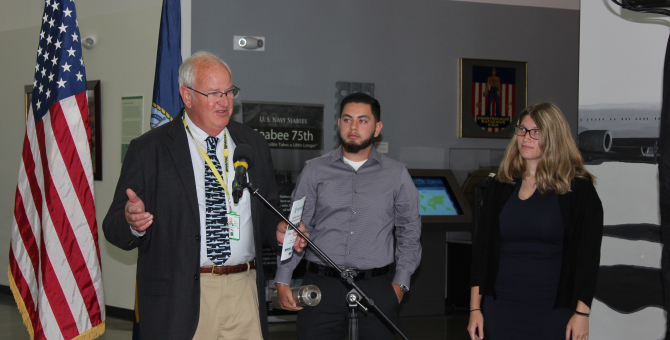Don’t Crack Under Pressure: Creating a Pressure-Tolerant Circuit Board
Project Description
The U.S. Navy uses many underwater electronics such as underwater cables for communication purposes and/or gathering data. Currently, the U.S. Navy uses large metal canisters to house these electronics at great ocean depths. These canisters are about 12 inches long, 4 inches in diameter, and weigh about 25 pounds. They are designed for specific ocean depths as they need to be able to withstand varying ocean pressure. Therefore, the farther down an electronic has to go, the bigger the canister it will require.The issue with these pressure vessels is that they can be a waste of space if the electronics that will be used are small in comparison to the canisters. The goal of our project was to find a new way to house circuit boards underwater to replace these bulky pressure vessels. We went with a high strength, compact case design. We designed and printed a printed circuit board (PCB) of an LED flasher and soldered surface mount components. Our case consists of 4 layers: a top and bottom plate, the circuit board layer, and a well layer. The material utilized was G10 Garolite, a high strength fiberglass. To sandwich the case together, we used a pressure tolerant epoxy and a capillary sealant. The two cases were tested in the Deep Oceans Lab in the Port Hueneme Naval Base up to 4,500 psi. Both LEDs stayed bright all the way up to 4,500 psi.









